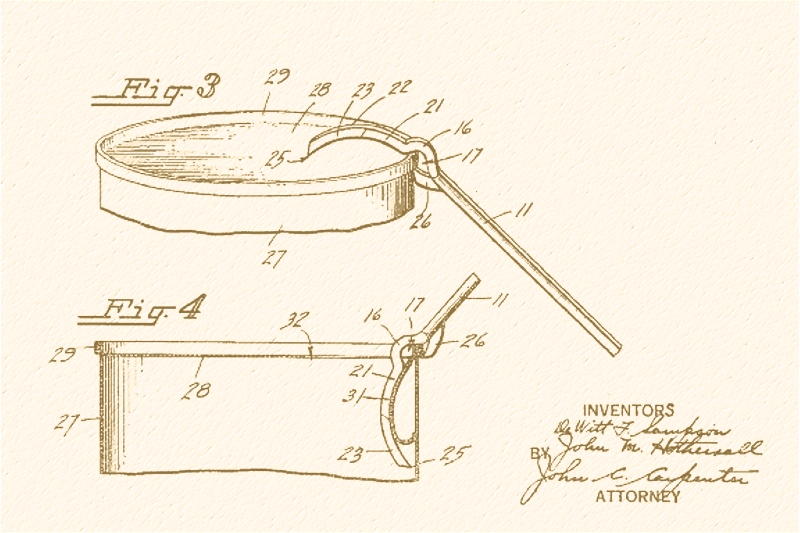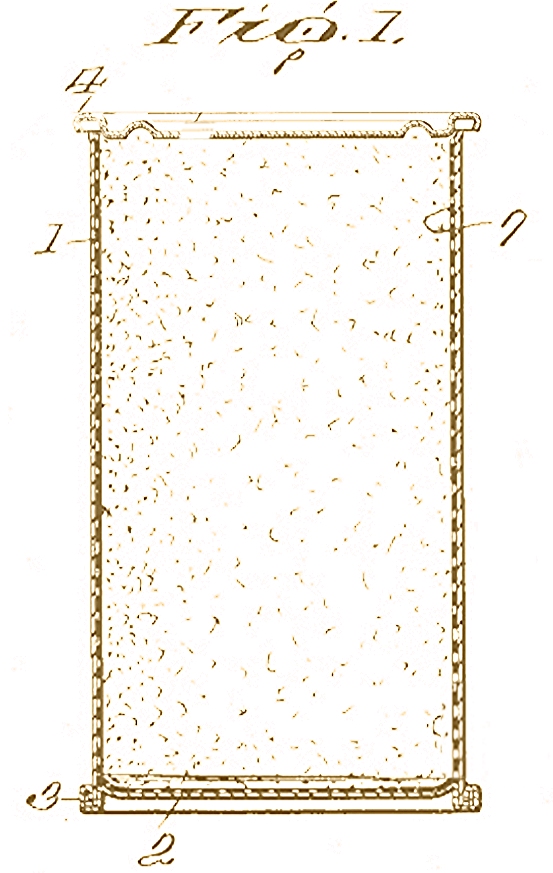July 1935:
National clones the flat top.
National clones the flat top.
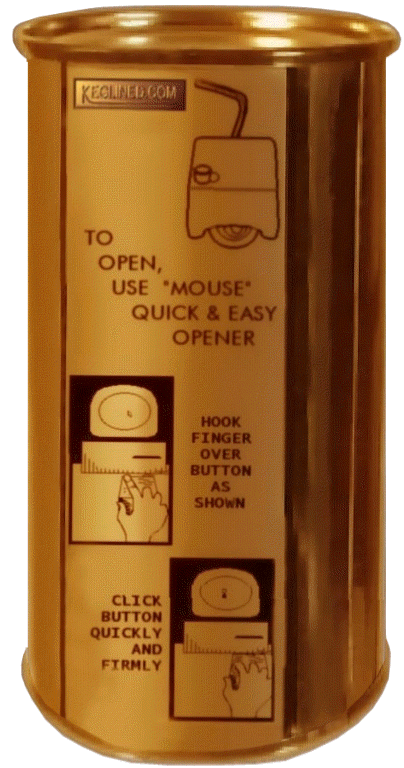
Click for larger image











1936:
Year of Innovation
Year of Innovation
. . . .
NATIONAL CAN
AMERICAN CAN
CONTINENTAL CAN












1 Jan 1936
Some
inventors are
keen to create
a self-opening
lid.
Others stick
to inventing
churchkey
variations.
inventors are
keen to create
a self-opening
lid.
Others stick
to inventing
churchkey
variations.

NCC STAYS COMPETITIVE
Breweries looking to package their product in flat tops, but not ready to pay Acco's prices, could look to National for help. National Can Company lands enough business to stay firmly in third place, behind American and Continental.ACCO HUNTS BIG GAME
With their gorgeousTest Can (produced in 1934) ACCO touts its product, and with it will reel in most
of the nation's
major brewers.
CCC BEGINS MOVING WEST
Continental runs an aggressive ad campaign; finds plenty of business with brewers nationwide.
Stanford defeats Southern Methodist, 7 - 0, in the 22nd Rosa Bowl.


PACIFIC CAN


PCC: Quick to Pounce
Acme Beer and Ale
hit west coast markets
in early January, in
Kan-Kegs* and Keglets, manufactured by Pacific Can.
There are now four major canners packaging beer..
Acme Beer and Ale
hit west coast markets
in early January, in
Kan-Kegs* and Keglets, manufactured by Pacific Can.
There are now four major canners packaging beer..
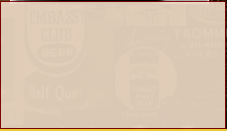

Fortune Magazine
Starts the year with a detailed look into beer cans, complete with eye-popping color photos.
Kings Beer starts the new year available in cans, and runs an aggressive ad campaign in New York and surrounding markets
Other
breweries
also tout
their new,
National Can
packaging.
Other
breweries
also tout
their new,
National Can
packaging.

Above, from pitchmen's sales package, many of the brands already signed.
Below, Continental salesman makes his pitch to brewery execs.
Below, Continental salesman makes his pitch to brewery execs.


PCC and Acme would maintain this relationship through early 1941.
* Space and/or asterisk optional. PCC also used KanKegs and Kan Kegs.

19 January 1936

Click for larger image


CCC's deliberate growth
westward
reflects the
company's
efforts to
become
genuinely
continental.
westward
reflects the
company's
efforts to
become
genuinely
continental.
Howard Hughes sets a coast-to-coast speed record.

Bottlers begin pushing their newest product, disposable bottle, like Steinie, Stubby, and Nu-Glas.
"Beer is packed in this container for your benefit. It is protected from the harmful effects of light on its delicate protein content, and by this modern up-to- date method of packing beer, you can now be sure of drinking a brew which has the same clear amber color and delicious taste as the ice-cold beer which flows from the ageing vats."
ACCO's Test Can


Fox DeLuxe's Double-Lined can claimed the contents had "Vitamins B and G in Every Drop"



29 January 1936
The Baseball Hall of Fame announces the names of its first- ever inductees: Cobb, Ruth, Wagner, Matthewson and Johnson.

This month the beer can is
one year old . . and bottlers
are getting desperate.
For starters, they
start passing
out these
business cards:
one year old . . and bottlers
are getting desperate.
For starters, they
start passing
out these
business cards:
In 1936 newspapers, nationwide, and other print media--as well as radio broadcast sponsors--were inundated with American Can Company promos.




CROWN CORK & SEAL

L-R, top to bottom: Ty Cobb, Babe Ruth, Honus Wagner, Chris Mathewson, Walter Johnson
Feb 1936
Stroudsburg becomes NCC's fifth business partner. A sixth, Commonwealth, will follow within weeks.


CCS IS UP & COMING
For years Crown Cork & Seal has been strictly a bottlecap manufacturer.February Print Advertisement


Charlie Chaplan's Modern Times hits theaters on February 5. Despite the industry's near-ten year trend in Talkies, Chaplin's release is a silent film.


However, on 18 February, with revenue from the sale of a gasket manufacturing plant, CCS President Charles E. McManus secures a down payment for a Philadelphia plant belonging to Acme Can (not to be confused
with Pacific Can,
Acme Beer,
Kan-Kegs
or Keglets).
with Pacific Can,
Acme Beer,
Kan-Kegs
or Keglets).


Detroit Free Press
Hardly a fad, within just a year beer cans have become so engrained in the public's mind they're shown right alongside bottles and a keg. Clearly the coolest Grain Belt container in the picture.
Lincoln introduces its stylish Zephyr in 1936

1 March 1936





CCS President McManus, creator of Nepro Cork, at least four cone top designs, and the Crowntainer



Hoover Dam is complete

Spring '36 : The Paris Can
Trying to solve (a) the
problem of opening flat tops, and (b) the problem of stacking cone tops in grocery store displays, Robert Paris introduces his universally
17 March
St. Patrick's Day Flood of 1936 inundates Pittsburgh



Miller chooses St. Patrick's Day to start selling its Select Beer in Keglined cans.
National Can earns a good share of business, runs brilliantly colored, attractive ads in Brewers Journals and the link, and seems to be well on its way to becoming a real challenger to Acco's command of the flat top market.

stackable design to the brewing community.
Late December, 1933



March, NY Daily News -
However, the Paris Can will never make it past the drawing board.


PACIFIC CAN
American spends much of the year perfecting their durable, wax-like substance - a brewer's pitch - used to coat the insides of their cans (beer quickly "skunkifies" when it contacts metal).


Florence Owens Thompson, photographed by Dorothea Lange. Migrant Mother would become an iconic image of the Great Depression.

New York Daily News
A double whammy - an ad showing how to use that newfangled can opener gadget, and a promotion for King's Beer and Ale.
A double whammy - an ad showing how to use that newfangled can opener gadget, and a promotion for King's Beer and Ale.

3 April
Richard Hauptmann executed by the State of New Jersey, for the kidnapping and murder of Charles Linbergh's child.






False Advertising? The FTC considers whether Acme's beer is actually non-fattening, and will soon render decision as to veracity of brewer's claim...


Charles "Lucky" Luciano is captured and jailed for pandering.


Eye-popping ad NCC ran in Brewers Journals and other business magazines in mid-1936
Esslinger's Menu Stationery
September 1934
Working with the ever-pliable Vinylite, CANCO develops a dual coat process ("C" enamel + Vinylite), to guarantee beer won't contact the insides of their beer cans, and adopts to their lining process their "Keglined" term.


Brews now advertised in "Keg Lined Cans" include Mule Head Ale, Ballantine, Ox Head, and P.O.N.

Click for larger image

Dust Bowl conditions ravage much of the nation throughout the mid-30s. On April 14th, 1936 millions suffered through one of the worst dust storms on record.
Acco and Krueger make their move; Krueger's Finest Beer and Krueger's Cream Ale are the first beers sold in cans. Krueger chooses Richmond, Virginia as its first market market.
By March Krueger's sales are up by 550%. Several brewers begin to seriously consider canning their beers.
By March Krueger's sales are up by 550%. Several brewers begin to seriously consider canning their beers.
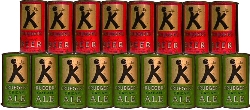



CROWN CORK & SEAL
April
Kronquest submits patent
applications de-
tailing new and
improved con-
cave bottom
and raised ribs
(and lining pro-
cess). CCC's
cans are now
stronger than before.
A May 1936 grocery ad. Note the hand-drawn letters for the word DELUXE.
19 May 1936
Alfred Landon defeats William Borah in the New Jersey primary, to become the Republican presidential candidate for the general election in November.

foxdeluxead.png)
In addition to new operations at the Acme Can Company plant, CCS breaks ground on new plants in St.Louis
and Madison, WI. The goal is to lay the groundwork for a huge operation, then make a cheaper can.
and Madison, WI. The goal is to lay the groundwork for a huge operation, then make a cheaper can.
NATIONAL CAN COMPANY


2 April 1935
Sampson and Hothersall are awarded Patent # 1,996,550 for their "Container Opener," which by now exists in dozens of shapes and sizes as the "Quick & Easy Opener."
Sampson and Hothersall are awarded Patent # 1,996,550 for their "Container Opener," which by now exists in dozens of shapes and sizes as the "Quick & Easy Opener."

May - June '36
Crown Cork & Seal, along with others, accuse American and Continental of conspiring with steel mills to keep new canning businesses from growing.The smaller cannes claim ACC and CCC are overpaying steel mills to prevent them from selling to smaller companies... like Pacific Can and Crown Cork & Seal.

July 1935
July 1935
America's largest brewer, Pabst signs with American Can Company. This is a major blow to those who believe beer in cans is a passing fad.
However, at first Pabst decided not to can its best-selling "Blue Ribbon" beer. After all, they reasoned, if the newfangled beer can were to fail, why associate their finest product with it?
Instead, the Rockford, Illinois brewery conservatively decided, their excursion into canning began with their "Export" variety.
America's largest brewer, Pabst signs with American Can Company. This is a major blow to those who believe beer in cans is a passing fad.
However, at first Pabst decided not to can its best-selling "Blue Ribbon" beer. After all, they reasoned, if the newfangled beer can were to fail, why associate their finest product with it?
Instead, the Rockford, Illinois brewery conservatively decided, their excursion into canning began with their "Export" variety.

National provides a more affordable product, and picks up business from brewers whose timing demands can not be met by a suddenly- swamped American Can Company.
July 24, 1935
CCC's Kronquest finally finds a reliable protective lining - "Cerese EE Wax" - and files to patent the process Continental will use to protect beer from contacting the insides of its cans.
CCC's Kronquest finally finds a reliable protective lining - "Cerese EE Wax" - and files to patent the process Continental will use to protect beer from contacting the insides of its cans.
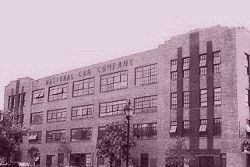


Early May; Second Italo-Ethiopian War
Italy takes the capital of Ethiopia, Emporer Selassie flees the country. Within days the League of Nations force Mussolini to back off.
Italy takes the capital of Ethiopia, Emporer Selassie flees the country. Within days the League of Nations force Mussolini to back off.

Combined with
C-enamel, the
wax is what
CCC has been
looking for.
Ironically, the
figures Kronquest
draws up to
accompany his
patent sub-
mission are of
a Flat Top can (with an obvious smile bead on its upper lid, for reinforcement).
Continental's first cans, we all know, were cone tops.
C-enamel, the
wax is what
CCC has been
looking for.
Ironically, the
figures Kronquest
draws up to
accompany his
patent sub-
mission are of
a Flat Top can (with an obvious smile bead on its upper lid, for reinforcement).
Continental's first cans, we all know, were cone tops.

.png)
The Federal Trade Commission agrees.

National clones the flat top.
Within six months of CANCO's market breakthrough, National comes along with its own flat
top. NCC also
buys the rights
to use Vinylite,
calling their
can-lining process "double-lining."
top. NCC also
buys the rights
to use Vinylite,
calling their
can-lining process "double-lining."

May - Jun
Brown Derby is now available in Canco cans.
29 October 1935
Bowser & Miltenberger's patent for what would become known as the 1/16th Barrel 'Can-O-Draft' is granted.
Bowser & Miltenberger's patent for what would become known as the 1/16th Barrel 'Can-O-Draft' is granted.
smile beads on the top lid.
Click to open


National's customer base came largely from brewers whose timing demands could not be met by a suddenly- swamped American Can Company.


May 1936
Inverted Ribs
(FBIR), as
well as the
newer,
extruded
cone design.


Within months, however, healthy sales of the canned beverage convinced Pabst it could sell its Blue Ribbon beer in cans.
Initially the brewer only changed the "Export" label by adding a blue ribbon.
Initially the brewer only changed the "Export" label by adding a blue ribbon.


Northampton Brewery Corp of Pennsylvania is the first brewery to can their beer with National.
Their Tru-Blu Ale and Beer are National's first.
Their Tru-Blu Ale and Beer are National's first.

Within weeks, Continental will enter the market...
May, June: Keg makers take American to court, seeking to nullify the Keglined trademark.



Fortunately, they would not succeed.

But continued escalating sales finally convinced Pabst the beer can was here to stay, and within within a year they happily included the term "Blue Ribbon" on their PBR cans.

September '35
With the help of a giant, Continental solves the
small guy's
problem.
Continental lands two
breweries (Heileman,
and brewing giant
Schlitz) for its maiden
voyage into the frontier
of beer cannery. In
doing so, they also
solve a problem
smaller brewers have
with the flat top:
With the help of a giant, Continental solves the
small guy's
problem.
Continental lands two
breweries (Heileman,
and brewing giant
Schlitz) for its maiden
voyage into the frontier
of beer cannery. In
doing so, they also
solve a problem
smaller brewers have
with the flat top:



The 'DOUBLE-LINED' trademark is approved in July 1936 (in commercial use since June 1935)
At some point in 1935, Bowser and Miltenberger's invention was licensed by the Heekin Can Company of Cincinnati who, with the Burger Brewing (also of Cincinnati) packaged beer in this behemoth of a can.
Notably, as illustrated in Bowser & Miltenberger's patent (above), the inner workings of this can were incredibly complex. Far from a simple container, this device was a workable beer delivery system -- complete with valves, tubes, standpipes, and even an internally-mounted cork stopper.
What isn't clear from the patent is what lined the inside of the 248 oz "Can O Draft" to protect the beer from contacting the metallic surfaces within. Whatever it is, the can boasts it's "tasteless" and "odorless."
Were the instructions on the monster container to keep the can "cold and still" prompted by its tendency to burst, or by the unstability of its complicated inner workings? Your guess is as good as mine.
Notably, as illustrated in Bowser & Miltenberger's patent (above), the inner workings of this can were incredibly complex. Far from a simple container, this device was a workable beer delivery system -- complete with valves, tubes, standpipes, and even an internally-mounted cork stopper.
What isn't clear from the patent is what lined the inside of the 248 oz "Can O Draft" to protect the beer from contacting the metallic surfaces within. Whatever it is, the can boasts it's "tasteless" and "odorless."
Were the instructions on the monster container to keep the can "cold and still" prompted by its tendency to burst, or by the unstability of its complicated inner workings? Your guess is as good as mine.
Peter Fox and Red Top Brewing Companies become the second and third to can their beers with National.


Tm #0371360
"CCS Conveyor Equipment"


In order to can beer, breweries had to buy expensive canning machinery; small breweries just couldn't dish out the revenue to install such equipment.
The first beer cans reminded consumers to COOL BEFORE SERVING. Apparently brewers feared people would overestimate the beer can's abilities - thinking it was such a revolutionary creation it could keep a product chilled indefinitely.
Max Schmeling knocks out Joe Louis in the 12th round of the Heavyweight Championship.


So Continental devised a tin can that could be filled with bottling machinery. Cone top cans are essentially metal bottles, and many brewers just have to make a couple minor adjustments to turn their ordinary bottle assembly lines into cone top assembly lines
7
cents
a
can?
cents
a
can?


Reminding everyone it does
much more than bottle caps, CCS is on the verge of yet another product expansion . . .



During the beer can's first days, many drinkers attempted to return empty cans -- as they'd done with bottles for years. So lots of beer cans from this time featured messages reminding users the beer can was not refillable.

To keep this bottle-to-can link in folks' minds, and to appeal to those uncomfortable using the Church Key, Continental tagged their product with the moniker Cap Sealed.
June 1936
The FW-61, considered the world's first helicopter, makes its first successful flight.
The FW-61, considered the world's first helicopter, makes its first successful flight.
October 29, 1935
Bowser and Miltenberger's patent is granted.
Bowser and Miltenberger's patent is granted.
If
they
only
knew...
they
only
knew...




American Can advertises its beer sign business

July ad, Greely, CO




1936 1936

Fritz Brew
in the "Cap Can"
in the "Cap Can"

Early 1936
Continental attracts numerous breweries to the Cone Top, including Heileman, Berghoff, Beverwyck, and the brewer who'd first tried to cans its product
with Heekin: Burger.
Continental attracts numerous breweries to the Cone Top, including Heileman, Berghoff, Beverwyck, and the brewer who'd first tried to cans its product
with Heekin: Burger.
Success of Krueger and Pabst attracts Scheidt, Ballantine, Waldorf, Fort Pitt, Genessee, Gunther, and Wehle.
All begin canning with American within a year of Krueger's first.
All begin canning with American within a year of Krueger's first.


By the year's end, Stroudsburg, Kings, and Commonwealth breweries have asked to sign on with National Can Company.


CROWN CORK & SEAL


Independence Day!!
In September CCS starts advertising in trade magazines, brewers journals, etc., that they're now making cans for beer. Appealing to breweries on tight budgets, Crown claims its product is the least expensive, and comes in thrifty options like paper label cans.



Of all the competing can companies, CCC seems to prefer photography, whereas the others favor stylized art depicting their products.


Joe DiMaggio sets numerous MLB records in the Summer of 1936

July '36
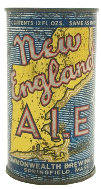







Continental makes two subtle changes to the structure of their cone top: the cone's "ribs" are raised, and its bottom is concave. Previous design featured inverted ribs and flat bottoms - a much weaker container.
Though only six years old, Fortune Magazine was already a respected source for research sought by entrepreneurs.
In other words, the Beer Can had clearly arrived.
In other words, the Beer Can had clearly arrived.

17 August
First time the
Budweiser
'Eagle Claw'
appears on a
commercial
product.
Submitted on September 21, trademark #0342923 doesn't state what kind of product this Anheuser-Busch trademark first adorned (advertisement, can, bottle, etc), but it does list August the 17th as its first appearance. So we know the first Budweiser can to go on sale could not have preceded this date.
First time the
Budweiser
'Eagle Claw'
appears on a
commercial
product.
Submitted on September 21, trademark #0342923 doesn't state what kind of product this Anheuser-Busch trademark first adorned (advertisement, can, bottle, etc), but it does list August the 17th as its first appearance. So we know the first Budweiser can to go on sale could not have preceded this date.

Steadily holding third place after American and Continental, NCC continues to pull in enough business to remain competitive.


Image from trademark application

Jesse Owens wins four Gold Medals at the Olympics in Berlin
September 29
Patent # 2,055,865 is granted for NCC's "Can Punch." If you've ever seen a can with an opening
like this,
chances
are it'd
fallen
victim to
this beast.
Patent # 2,055,865 is granted for NCC's "Can Punch." If you've ever seen a can with an opening
like this,
chances
are it'd
fallen
victim to
this beast.

6 October 1936
Sanford E. Richeson submits his invention: a toggling opener for
beer cans.
The technology needed to
economically mass-produce this
toggling opener is still years away.
But still, it's a pretty cool idea.
Click here to see the invention
(PDF, opens in a new window).



Richeson's invention might have come with a totally different kind of Opening Instructions - stamped on the top lid.



Couple Pabst Export mockup images,
a year or two after being dumped.
a year or two after being dumped.

Some Cap-Sealed can ads claimed "like a keg it's lined." Wonder if this raised some eyebrows at American...






PACIFIC CAN

A few months after launch, Pacific Can goes on another publicity blitz: "famous overnight.."
In 1936 the Martin M-130 "China Clipper" entered into commercial service
Fall 1936
Continental crosses
over, starts selling Flat Tops.
Old Dutch Brand
is the first in CCC's
FT can.
Continental crosses
over, starts selling Flat Tops.
Old Dutch Brand
is the first in CCC's
FT can.

Pittsburgh Press
October
October



Spanish Civil War
General Franco's Nationalists engage in civil war with the People's Army
General Franco's Nationalists engage in civil war with the People's Army



Iron City's first can design - this flat top - will be discontinued within the next year.




CROWN CORK & SEAL
National Can branches out, cans wine



October 28
The Statue of Liberty
is 50 years old.
The Statue of Liberty
is 50 years old.





A Juice Tab, and
a Punch Top?
a Punch Top?






CROWN CORK & SEAL
November
Crown Cork and Seal's
first customer is Ebling's,
and they call their cans
"metal bottles." Ebling's chose the unlabeled conetop option, and applied their own Beer and White Horse Ale labels. They weren't around very long so they're extremely rare nowadays.
CCS used an eye-catching nude woman in the ads they posted to brewers journals and the like. It's interesting their sexy lady wasn't used to make bogus claims - like the one Acme had been making about the health/
dietetic
benefits
of their
brew.
Crown Cork and Seal's
first customer is Ebling's,
and they call their cans
"metal bottles." Ebling's chose the unlabeled conetop option, and applied their own Beer and White Horse Ale labels. They weren't around very long so they're extremely rare nowadays.
CCS used an eye-catching nude woman in the ads they posted to brewers journals and the like. It's interesting their sexy lady wasn't used to make bogus claims - like the one Acme had been making about the health/
dietetic
benefits
of their
brew.
Dec 24. Julius Edward Selliken of Brooklyn applies for a patent for "new & useful improvements" to existing container openers. Two of the ideas he included in this patent resemble what, decades later, willl become the Juice Tab and the Punch Top.

October As You Like It ad








Click for larger image

It took a few decades and Ermal Fraze to come up with the technology to make the rippable opener possible, but the fact these ideas were submitted a week before 1937 is a perfect ending to an incredible year of innovation.




"I'm outta here."

How close was the world to having these openers be the standard for 1930s beer cans?

NEXT: 1937
© 2001 - , Philip L. Thompson








































